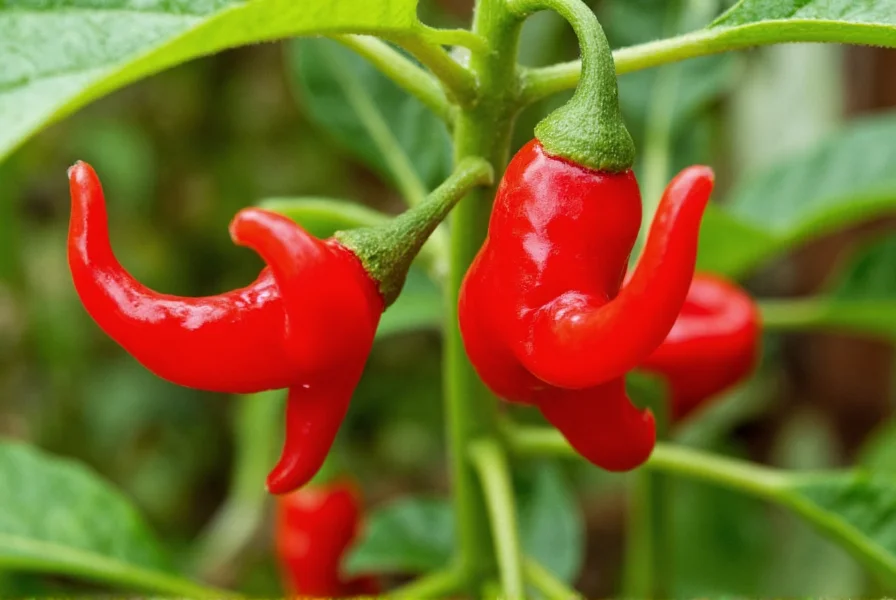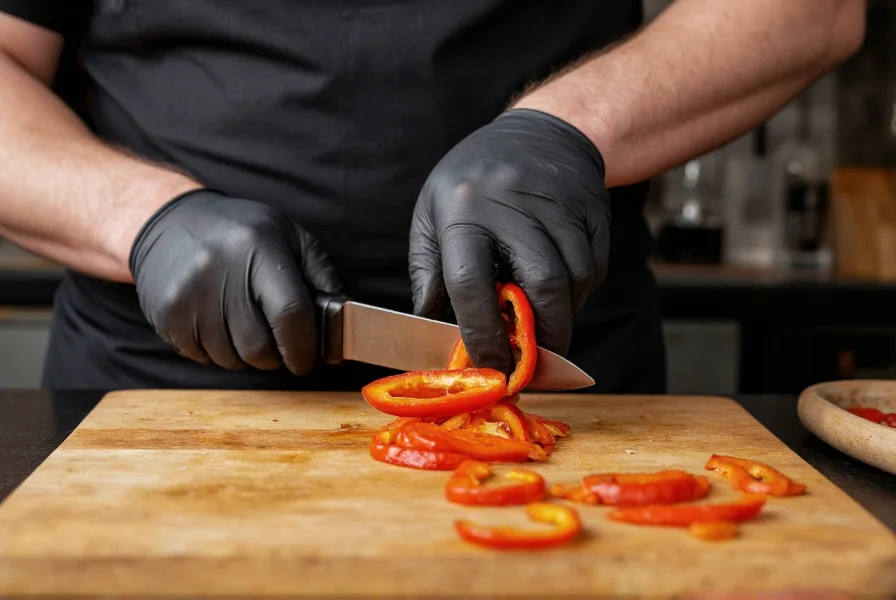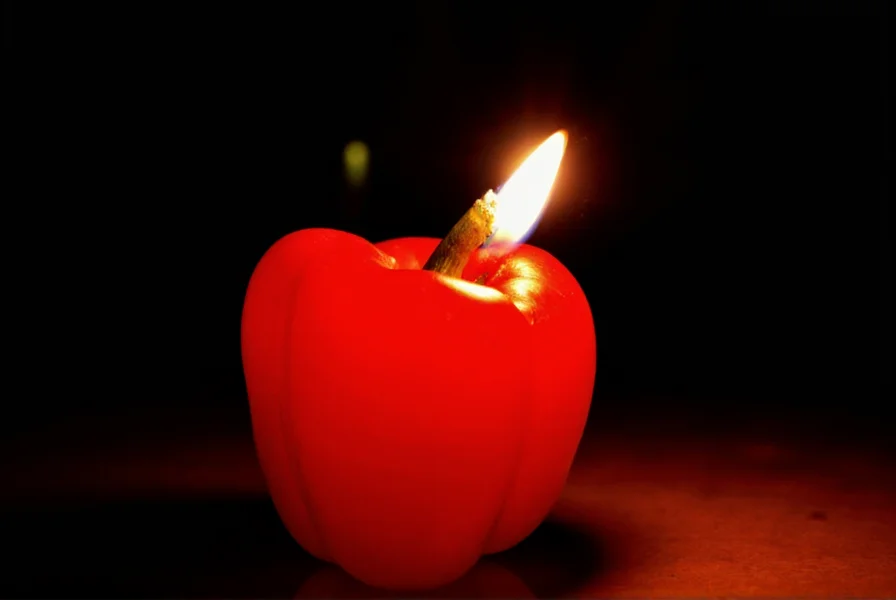When people search for 'lit pepper,' they're typically using contemporary slang to describe exceptionally spicy chili peppers. The term 'lit' has evolved in popular culture to mean something exciting, intense, or impressive—qualities that certainly apply to the world's hottest peppers. This linguistic shift reflects how food enthusiasts describe their experiences with extreme heat levels in chili peppers.
Decoding Pepper Terminology and Heat Measurement
The Scoville Scale remains the standard measurement for pepper heat, quantifying capsaicin concentration in Scoville Heat Units (SHU). Understanding this scale helps clarify why certain peppers earn the 'lit' descriptor:
| Pepper Variety | Scoville Heat Units | Common Descriptors |
|---|---|---|
| Carolina Reaper | 1,400,000-2,200,000 SHU | Intense heat with fruity undertones |
| Trinidad Moruga Scorpion | 1,200,000-2,000,000 SHU | Immediate burn with delayed peak |
| Ghost Pepper (Bhut Jolokia) | 800,000-1,041,427 SHU | Smoky flavor with intense heat |
| Habanero | 100,000-350,000 SHU | Tropical fruit notes with significant heat |
| Jalapeño | 2,500-8,000 SHU | Moderate heat with grassy flavor |
Peppers reaching 800,000+ SHU often receive the 'lit' designation in culinary circles. These extreme varieties require careful handling and culinary consideration. The Carolina Reaper currently holds the Guinness World Record as the world's hottest pepper, though new hybrid varieties continue to push heat boundaries.
Safety Practices for Handling Extremely Hot Peppers
Working with 'lit' level peppers demands proper safety protocols. Capsaicin, the compound responsible for heat, can cause severe irritation to skin and eyes. Professional chefs and home cooks should follow these essential precautions:
- Wear nitrile gloves when handling super-hot peppers
- Avoid touching your face or eyes during preparation
- Use dedicated cutting boards that won't transfer oils to other foods
- Work in well-ventilated areas to avoid inhaling capsaicin particles
- Have dairy products like milk or yogurt nearby to neutralize burn
Many inexperienced cooks underestimate how little 'lit pepper' they need in recipes. A single Carolina Reaper seed contains enough capsaicin to dramatically alter a dish's heat profile. Start with minuscule amounts and gradually increase to achieve desired intensity without overwhelming other flavors.
Understanding Regional Pepper Varieties and Cultural Context
The global pepper landscape features numerous regional varieties that might earn the 'lit' descriptor in local contexts. In Caribbean cuisine, Scotch Bonnet peppers (100,000-350,000 SHU) provide significant heat with distinctive fruity notes. African Bird's Eye peppers (50,000-175,000 SHU) deliver intense heat common in West African cooking. These regional varieties often form the foundation for what locals might consider 'lit' peppers within their culinary traditions.
Pepper heat perception varies significantly among individuals due to genetic differences in TRPV1 receptors. What one person describes as 'lit,' another might find merely warm. This biological variation explains why heat tolerance differs dramatically across populations and why 'lit pepper' remains a subjective descriptor rather than a technical classification.

Practical Applications for Extremely Hot Peppers
Chefs incorporate 'lit' level peppers strategically to enhance dishes without dominating them. The key lies in balancing heat with complementary flavors:
- Infuse oils or vinegars with small pepper pieces for controlled heat distribution
- Create finishing sauces that add heat after main cooking completes
- Pair with sweet ingredients like mango or pineapple to balance intense heat
- Use in small quantities in meat rubs for complex flavor profiles
- Make diluted hot sauces where vinegar helps mellow extreme heat
Home cooks exploring 'lit pepper' territory should document their experiments. Note the exact amount used, preparation method, and final heat level. This record keeping helps refine future attempts and prevents accidentally creating inedibly hot dishes. Remember that heat intensifies over time as capsaicin distributes through food.

Debunking Common Pepper Myths
Several misconceptions surround extremely hot peppers that deserve clarification:
- Myth: The seeds contain most of the heat
Reality: Capsaicin concentrates in the white pith (placenta), not primarily in seeds - Myth: Milk completely eliminates pepper burn
Reality: Dairy helps but doesn't instantly neutralize all capsaicin—effects diminish over time - Myth: Heat level directly correlates with flavor quality
Reality: Many ultra-hot peppers sacrifice complex flavor for pure heat intensity - Myth: 'Lit pepper' is an official horticultural classification
Reality: It's contemporary slang with no botanical significance
Understanding these distinctions helps enthusiasts make informed decisions when seeking extremely spicy culinary experiences. The pursuit of 'lit' peppers should prioritize both safety and flavor development rather than heat measurement alone.
Frequently Asked Questions
What does 'lit pepper' actually mean in culinary terms?
'Lit pepper' isn't a formal culinary term but contemporary slang describing extremely spicy chili peppers. People use 'lit' (meaning exciting or intense) to refer to peppers like the Carolina Reaper, Ghost Pepper, or Trinidad Moruga Scorpion that register above 800,000 Scoville Heat Units. The term reflects subjective heat perception rather than a specific botanical classification.
How can I safely handle peppers described as 'lit'?
Always wear nitrile gloves when handling super-hot peppers, avoid touching your face, and work in well-ventilated areas. Use dedicated cutting boards and utensils that won't transfer capsaicin to other foods. Have dairy products like milk or yogurt nearby to counteract accidental exposure. Never rub your eyes after handling these peppers, and wash all surfaces thoroughly with soapy water after preparation.
Which peppers are commonly called 'lit' in food communities?
Peppers frequently described as 'lit' include the Carolina Reaper (1.4-2.2 million SHU), Trinidad Moruga Scorpion (1.2-2 million SHU), and Ghost Pepper (800,000-1 million SHU). Some enthusiasts also apply the term to newer hybrids like the Dragon's Breath pepper (2.48 million SHU) or Pepper X (3.18 million SHU), though these extreme varieties often sacrifice flavor complexity for pure heat intensity.
Can I grow 'lit peppers' at home successfully?
Yes, many 'lit' peppers can be grown at home with proper conditions. Carolina Reapers and Ghost Peppers thrive in warm climates with well-draining soil and consistent watering. Start seeds indoors 8-10 weeks before last frost, provide 6-8 hours of direct sunlight daily, and maintain temperatures between 70-90°F. Wear gloves when harvesting and handling these peppers. Note that heat levels can vary based on growing conditions and stress factors applied to the plants.
How do I reduce the heat of a dish that's become too 'lit'?
To reduce excessive heat in a dish, add dairy products like yogurt, sour cream, or milk which contain casein that binds with capsaicin. Acidic ingredients like lime juice or vinegar can also help balance heat. Increasing the recipe's volume with additional non-spicy ingredients (like tomatoes or beans) dilutes the heat concentration. Sugar or honey provides counterbalancing sweetness. Remember that heat intensifies as dishes sit, so adjust carefully and allow time for flavors to integrate after modifications.











 浙公网安备
33010002000092号
浙公网安备
33010002000092号 浙B2-20120091-4
浙B2-20120091-4